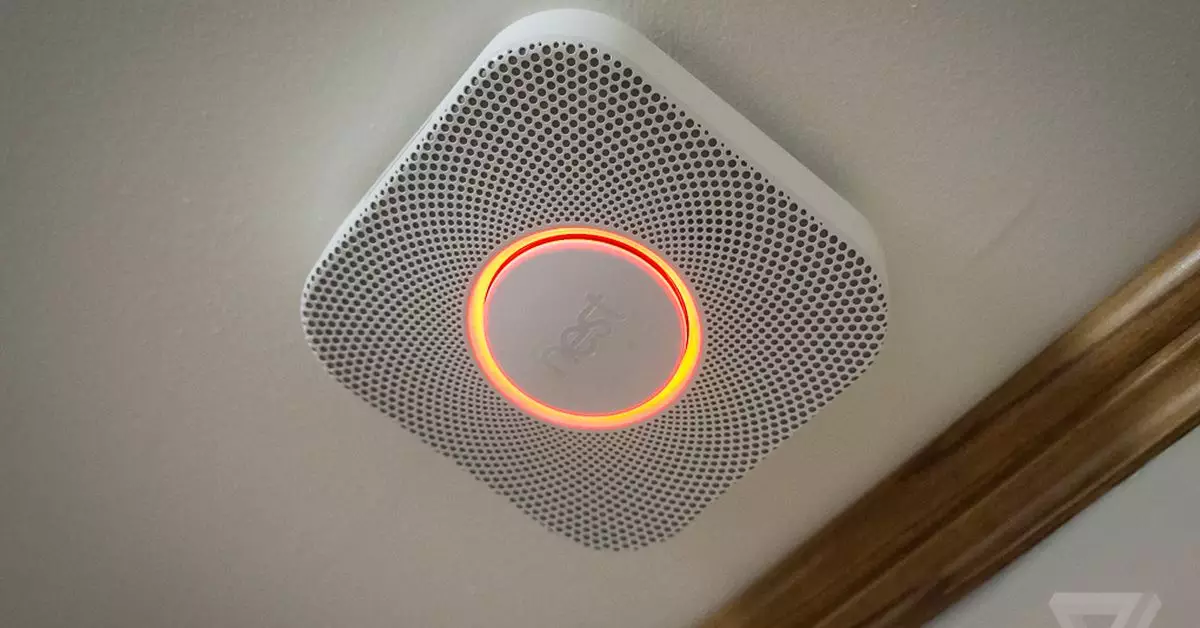In a notable step towards unifying its smart home ecosystem, Google has begun phasing out the Nest app for its users in favor of the Google Home app. This transition marks a significant milestone for the tech giant as it looks to streamline user experiences across its connected devices, consolidating functionalities that were previously scattered across multiple applications.
The Nest Protect: The Last Holdout
The Nest Protect smoke and carbon monoxide alarm has been a staple of Google’s smart home apparatus, and it was the final device requiring the Nest app for setup and management. With Google’s announcement that the functionalities of the Nest Protect will migrate to the Google Home app, users can expect a more integrated platform for managing their smart devices. The transition is not just logical but also necessary in an era where consumers are increasingly drawn to simplicity and usability in technology.
By centralizing its device management under the Google Home umbrella, Google aims to enhance user convenience. As the company notes, users will be able to receive crucial notifications about smoke alarms, carbon monoxide alerts, and critical status updates related to battery health and device issues—all from a single app interface. This ease of access promotes not just user engagement but also enhances the overall utility of the devices.
With the recent updates to the Google Home app, the integration of Nest Protect promises several new features. Users will now enjoy the capability to set up automated sound check testing, view alarm statuses, and even run a complete safety check-up remotely. Moreover, live camera feeds can be accessed directly through the emergency card, ensuring immediate verification in case of an alert.
The addition of E911 calling for Nest Aware subscribers also enhances the functionality, allowing users to contact local emergency services quickly. This feature underscores a growing trend in smart home technology—the need for enhanced safety and rapid response capabilities in emergency situations.
Alongside the Nest Protect integration, Google is also introducing updates to the management of smart locks within the Google Home app. Support for locks connected via Matter will enable users to customize passcode settings and employ features like one-tap entry and vacation mode conveniently. The phased rollout of this functionality indicates that Google strives to accommodate a broader range of manufacturers in its ecosystem, thereby enhancing compatibility and user options.
For instance, the passcode management feature allows users to delegate access to household members and guests effortlessly. It enables control over who can enter your home and when, a pivotal aspect of modern home security. One-touch locking offers an additional layer of convenience, allowing users to lock or unlock doors with just a tap.
Challenges and Considerations
Despite the advancements, there are challenges accompanying this transition. Some users may exhibit resistance to the phasing out of the Nest app, particularly if they have grown accustomed to its functionalities. It’s essential for Google to provide clear communication regarding features that will be maintained in maintenance mode, ensuring users understand what to expect as the transition unfolds.
Moreover, compatibility issues may arise with certain Matter locks and their respective functionalities, posing a potential challenge in how features are implemented across varying manufacturers. Google’s assurance that not all features will apply universally to Matter locks highlights the complexities of such connectivity standards in smart home technologies.
Google’s shift toward an integrated home management system is indicative of a larger trend towards interoperability in the smart home sector. As more manufacturers embrace standards like Matter, the future for consumers seems promising. Users are likely to benefit from enhanced control and simplified interfaces as smart devices become more cohesive.
To conclude, Google’s move to consolidate its smart home products under the Google Home app is a thoughtful strategy aiming to enhance user experience and facilitate a safer home environment. The functionality improvements promise to make smart home management easier, more reliable, and more intuitive. As the shift continues, users can expect not only a smoother interface but also broader capabilities, making daily interactions with technology increasingly effortless.

